A Complete Analysis of “Portrait of Berlin” by Marsden Hartley

Uncover how Marsden Hartley’s 1913 Portrait of Berlin fuses Cubist geometry, Expressionist color, and symbolic motifs to capture the city’s dynamic spirit.

Uncover how Marsden Hartley’s 1913 Portrait of Berlin fuses Cubist geometry, Expressionist color, and symbolic motifs to capture the city’s dynamic spirit.
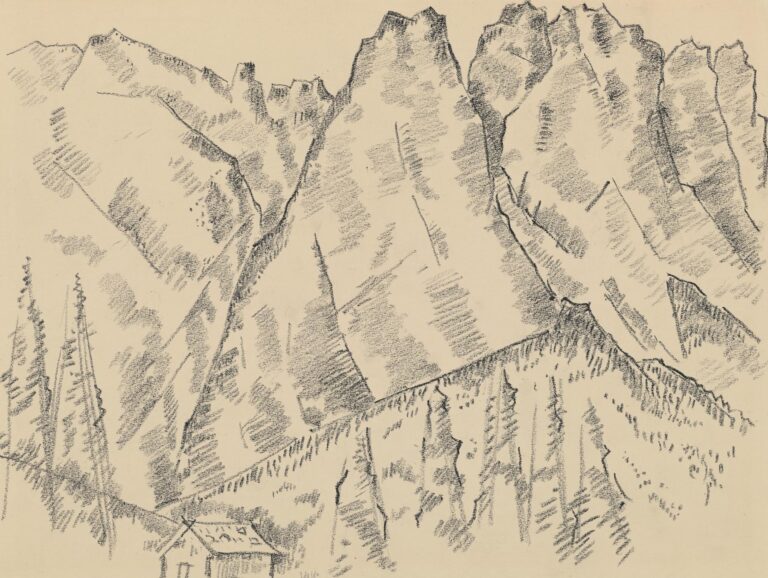
Discover how Marsden Hartley’s 1933 drawing Alpspitze Mittenwald Road captures Bavarian Alpine grandeur through disciplined line, tonal mastery, and modernist form.

Discover how Marsden Hartley’s 1931 “Flaming Pool—Dogtown” transforms coastal boulders and water into a vivid modernist landscape through bold color and form.

Explore how Marsden Hartley’s 1933 drawing Waxenstein distills alpine majesty into monochromatic form, blending modernist restraint with symbolic power.

Explore how Marsden Hartley’s 1933 monochromatic Waxenstein captures alpine grandeur through bold form, light-and-shadow interplay, and meditative simplicity.

Marsden Hartley’s 1935 graphite drawing “Mountain Landscape” turns a single peak and a tiny cabin into a meditation on scale, memory, and modernist form. Discover how contour, tonal blocks, and negative space let the mountain breathe while the humble shelter anchors Hartley’s spiritual search for home.

Marsden Hartley’s “Abstraction, Blue, Yellow and Green” (1913) fuses Cubist planes and Expressionist heat into a radiant web of color. Discover how a central yellow wedge, vibrating edges, and saturated blues, greens, and reds forge a personal modernist language in wartime Berlin.
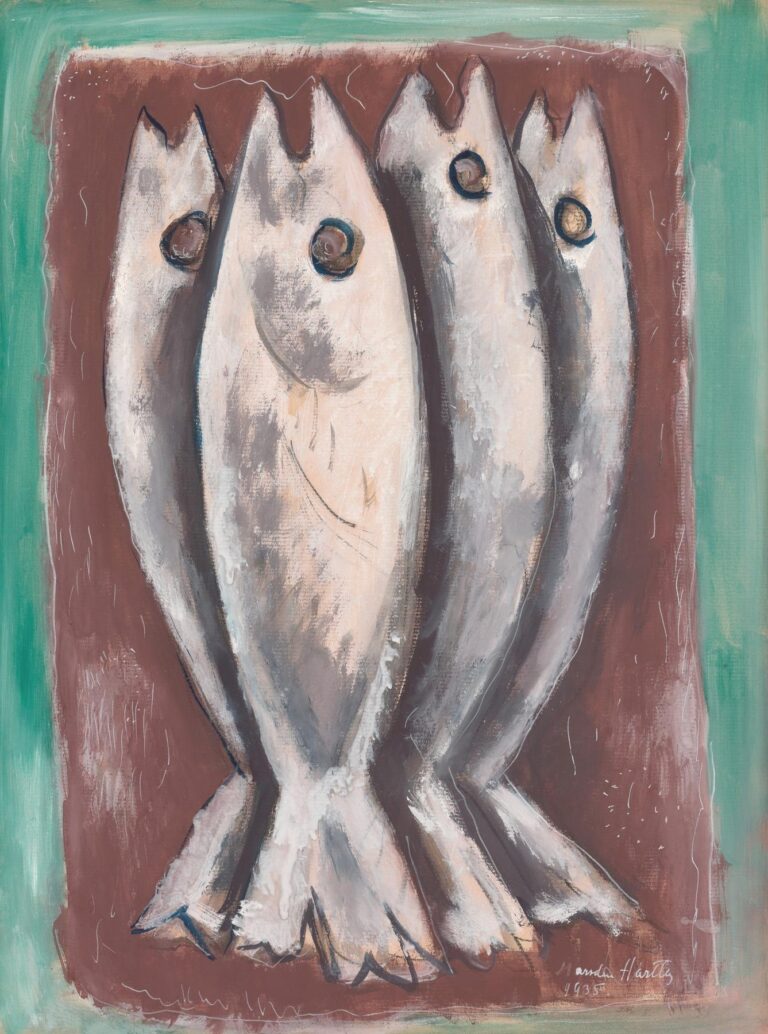
Marsden Hartley’s “Sea Ghosts” (1935) elevates four silvery fish into haunting icons of Maine’s coast. Discover how bold contour, restrained color, and spiritual symbolism turn a humble catch into a modernist meditation on memory, mortality, and sustenance.

Marsden Hartley’s “Still Life With Pears” turns a handful of fruit on a blue-draped cloth into a study of ripeness, color, and memory. Explore how pastel touch, warm–cool contrasts, and symbolic echoes of his abstractions reveal the artist’s modernist vision in miniature.
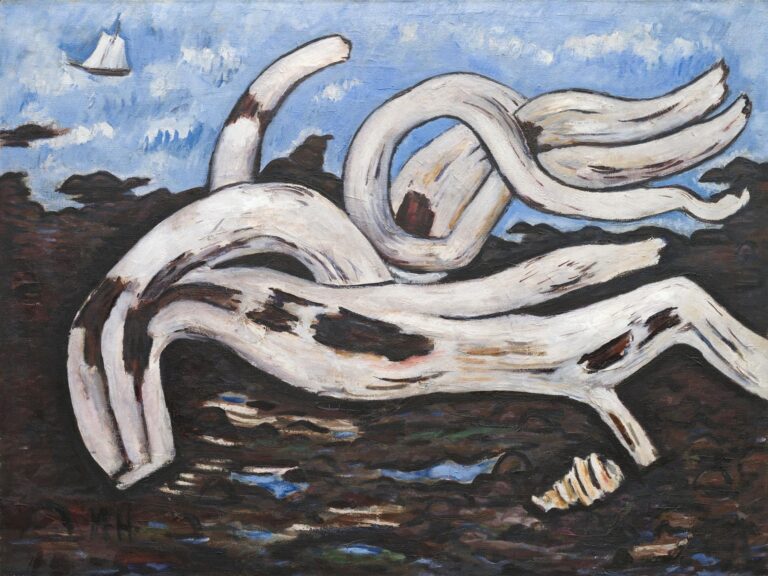
Marsden Hartley’s “Driftwood on the Bagaduce” (1940) turns a bleached log on a Maine shoreline into a heroic emblem. Discover how bold contour, rugged color, and personal symbolism fuse as the artist transforms coastal debris into a meditation on endurance, memory, and modernist form.

Marsden Hartley’s Raptus (1913) erupts with blazing circles, thrusting triangles, and the scarlet word “RAPTUS,” turning spiritual ecstasy and personal urgency into a modernist icon. Explore how Berlin’s avant‑garde energy, sacred symbolism, and impasto gesture coalesce in this pivotal abstraction.

Marsden Hartley’s Painting No. 8 (1913) is a spare network of blue lines—sunbursts, diagonals, and sigils—that marks his leap into abstraction in Berlin. Discover how gesture, symbol, and structure fuse in this pivotal drawing‑painting.
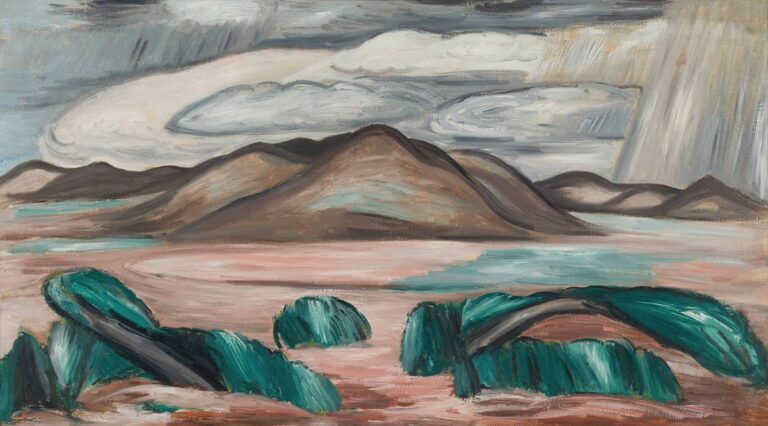
Marsden Hartley’s New Mexico Recollection No. 8 (1923) transforms a remembered desert storm into rhythmic bands of pink earth, teal shrubs, and rolling gray clouds. Explore how memory, modernist form, and spiritual symbolism fuse in this landmark canvas of the American Southwest.

Marsden Hartley’s “Painting No. 46” (1915) fuses flags, targets, checks, and blazing color into a wartime elegy painted in Berlin. Discover how the artist turned military pageantry and personal loss into a landmark of American abstraction.
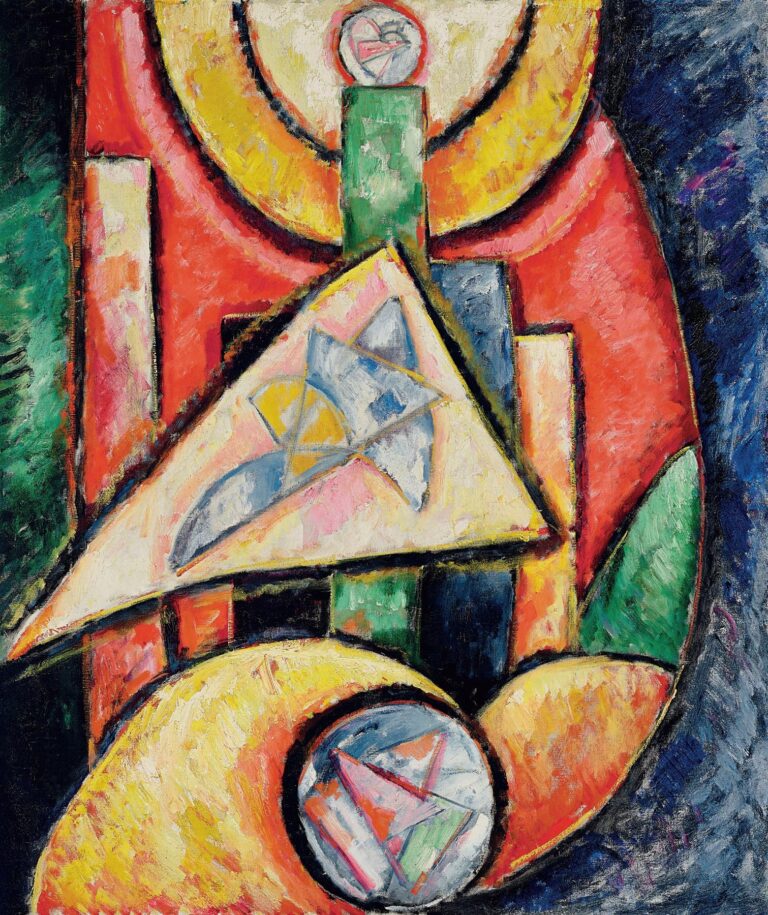
Marsden Hartley’s “Abstraction” (1913) fuses blazing color, geometric totems, and thick impasto into a modernist altar painted in Berlin. Discover how Cubist structure, Expressionist emotion, and private symbolism combine in this pivotal canvas of American abstraction.

Marsden Hartley’s “Songs of Winter, No. 3” (1908) turns a snow‑streaked mountain into a vibrant symphony of blues, violets, and swirling whites. Explore how bold impasto, musical rhythm, and emotional color forge an early milestone of American modernism.
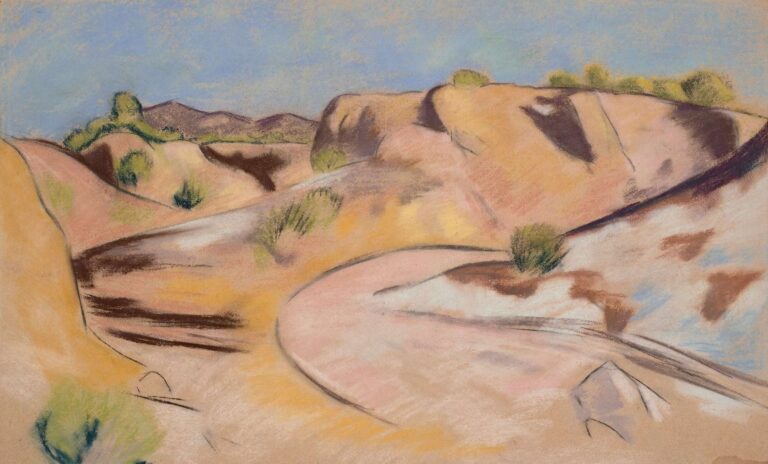
Marsden Hartley’s New Mexico (1918) captures an arroyo winding through sun‑bleached hills in soft pastel. Discover how the artist fused Southwestern geology, muted desert color, and modernist form to create a contemplative landmark of American modernism.

Marsden Hartley’s Summer Sea Window (1940) merges still life and seascape: a white pitcher with a single bloom and two closed books sit before an open window framing a Maine island and cloud‑filled sky. Discover how Hartley unites interior reflection and coastal light in a modernist meditation on looking and belonging.